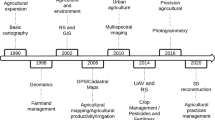Abstract.
Digital spatial data is an attempt to model and describe the real world for use in computer analysis and graphic display of information. To insure that data is not misused; the assumptions and limitations affecting the collection of the data must be fully documented. As geo-spatial data producers and users handle more and more data, proper documentation will provide them with a keener knowledge of their holdings and allow them to better manage data production, storage, updating and reuse.
The need for standards for geo-spatial data becomes, thus, self-explanatory. The objective of the standard is to provide a clear procedure for the description of digital geo-spatial datasets so users will be able to determine whether the data in a holding will be of use to them and how to access the data. One of the important standards in GIS is metadata. Metadata allows a producer to fully describe a dataset so users can understand the assumptions and limitations and evaluate the dataset's applicability for their intended use.
A number of metadata are being used or are being proposed worldwide. This paper reviews eight important metadata structures in current use or development in order to develop an alternative simpler, yet inclusive, globally applicable metadata standard.
Similar content being viewed by others
Author information
Authors and Affiliations
Rights and permissions
About this article
Cite this article
Kim, T. Metadata for geo-spatial data sharing: A comparative analysis. Ann Reg Sci 33, 171–181 (1999). https://doi.org/10.1007/s001680050099
Issue Date:
DOI: https://doi.org/10.1007/s001680050099




